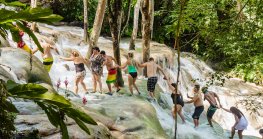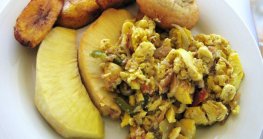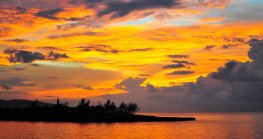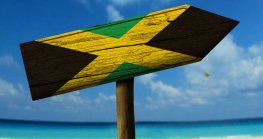Best time of year to spot wildlife in Jamaica
.jpg&w=848&h=499&zc=1)
If you're a nature lover visiting Jamaica, explore the island and discover its fascinating wildlife.
Jamaica is home to several animal sanctuaries and conservatories dedicated to preserving its unique fauna.
You might also enjoy learning about the history of these exotic animals, some of which are endangered.
To see them in their natural habitats, it's best to plan your trip carefully, as some are not visible year-round and can only be found in specific parts of the island.
Jamaican Hummingbird (Doctor Bird)
If you're eager to see Jamaica's national bird, the Doctor Bird, consider visiting the island during the spring and early summer, from March to June.
During these months, they are more active and easier to spot as they flit from flower to flower.
You’ll find the Doctor Bird throughout the island, but they are most frequent in the Blue and John Crow Mountains region.
Also, if you plan to visit the Hope Botanical Gardens in Kingston, you may be fortunate to spot a few.
Dolphins
Dolphins are always a delight to observe.
The best time to spot them in Jamaica is during the warmer months, from May to October.
During this period, the sea is calmer, making dolphin sightings more frequent.
You can often see dolphins frolicking in the coastal waters, particularly on the south coast - Treasure Beach.
Consider taking a boat tour or a dolphin-watching excursion to increase your chances of a close encounter.
Jamaican Swallowtail Butterfly
The Jamaican Swallowtail Butterfly is the largest in the Western Hemisphere.
The best time to see these butterflies is from June to August when they are most active.
These months coincide with the flowering season of many plants that the butterflies feed on.
To catch a glimpse of these beautiful insects, head to the Blue Mountains.
The Cinchona Botanical Gardens in the Blue Mountains is an excellent location to spot these butterflies.
Jamaican Tody
The Jamaican Tody is a small, brightly colored bird found in Jamaica.
These birds are active throughout the year, but the best time to spot them is during the breeding season, from February to June.
During this time, they are more vocal and easier to locate.
The Jamaican Tody is most visible in the Cockpit Country and the Blue and John Crow Mountains.
Wildlife preservation in Jamaica
To make the most of your wildlife-watching adventure in Jamaica, be sure to follow the safety rules offered by the island's wildlife preservation authority.
Some of these animals are protected and can be sensitive to human presence.
Always keep a respectful distance and avoid disturbing their natural behaviors.
Bring binoculars for a closer look, wear comfortable clothing, and stay hydrated.
Early mornings and late afternoons are the best times for spotting wildlife, as many animals are more active during these cooler parts of the day.
© 2019 Jamaica Experiences All Rights Reserved



















